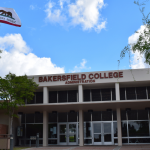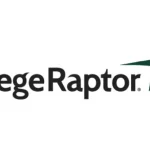AI Communication Platforms are emerging as a “must-have” for any college or university. Higher education institutions need to engage students with the modern communication experience they are expecting, while at the same time extending the reach of their support staff so they can scale the personal touch.
The key components of an AI Communication Platform include:
- AI-Powered 2-way SMS (for reaching students on their mobile phones)
- AI-Powered Chatbot (for students visiting the website and other online web properties)
- AI-Powered Live Chat (for use when staff is available and the AI gets “stumped”)
Since the promise of the AI is that it gets smarter over time, the platform should be “system agnostic” so that if the college or university switches any of its enterprise systems (such as SIS, CRM, LMS) at any point, it won’t lose all the AI learning that has taken place. At the same time, the platform needs to be able to integrate easily with all other systems to access the appropriate data.
But what about the brain? How important is it to the success of the AI?
We refer to the brain as the knowledge base. The knowledge base is critical to the success of the platform. Why?
This is because the AI needs a robust knowledge base (which includes a large data set of interactions) in order to better understand student intents. What this means is that for the AI to succeed, it needs to be trained to be able to recognize what a student is really asking (which is difficult without a larger sample size to pull from). For example, students may ask the same questions in wildly different ways, even though they are ultimately looking for the same information (see below).
One student asks: “When will I receive my refund?”
Another student asks: “Where is my money?”
And another student asks: “How will I get money for my books?”
AI Success Hinges on the Knowledge and Training in the Brain
For an AI Communication Platform in higher education to succeed at an individual college or university, it requires a few key components:
- A large data set. This can only be achieved through a platform that is architected in a “multi-tenant” structure. This means that the platform hosts multiple institutions, with their own individual container of knowledge, but benefits from the platform’s single, collective brain that informs the AI’s understanding of student intents. Without this approach, there will not be enough data to drive the sort of learning that is critical for an AI tool to grow over time.
- Minimal institutional “lift”. This refers to the amount of work and burden placed on institutional staff to train the AI and monitor its interactions. At Ocelot, we have a team dedicated to guided machine learning that is monitoring patterns and trends across our network to ensure that the technology is getting smarter and smarter. Most schools do not have the resources to do the sort of monitoring required to nurture the AI.
- Compliant content. There are certain topics within higher education that are highly regulated such as Title IV, Title IX, and international students/programs. This content is broadly consistent across institutions. An AI platform that monitors this content and pushes out updates to schools drives great savings for each institution using the platform.
- Integrations that (actually!) connect with other major systems. Colleges and universities have long felt burned by technology vendors that promise easy integration of their tool with other systems, only to learn that the integrations take too long, cost too much, or need too much attention over time. They need integrations that are easy to implement. These integrations are critical for the AI to pull in relevant data to provide a personalized experience. They are also critical for pushing data out of the AI platform to the other systems, which in turn, drives up the ROI on all collective platforms.
The Wrap
AI Communication Platforms are emerging as a “game changer” that can support modern communications that scale the personal touch. With limited resources, overburdened staff, the “great resignation” leading to unprecedented levels of turnover, and students expecting 24/7 access to their college or university, AI communications are the path forward.
Yet, the AI will only be successful if it has a strong and growing knowledge base to draw upon. To have the best knowledge and for a platform to emerge over time as “best of breed,” it will need to access large data sets, require minimal support from the institution, include pre-packaged content that is updated regularly for compliance, and integrate with other key technology platforms across the higher education ecosystem.















